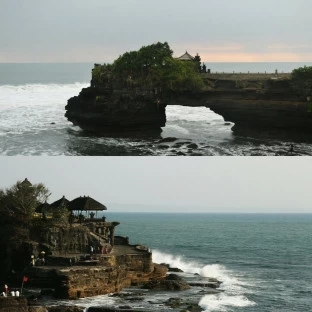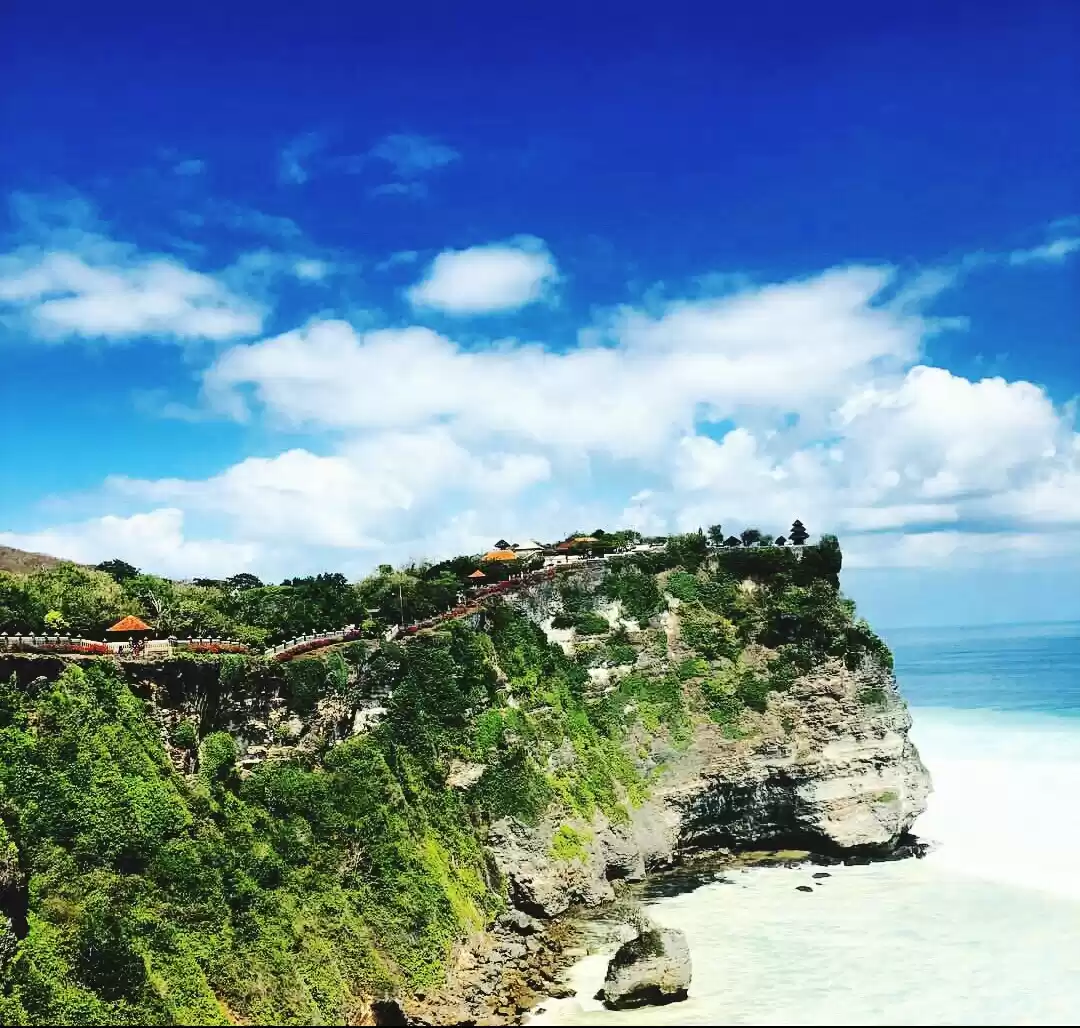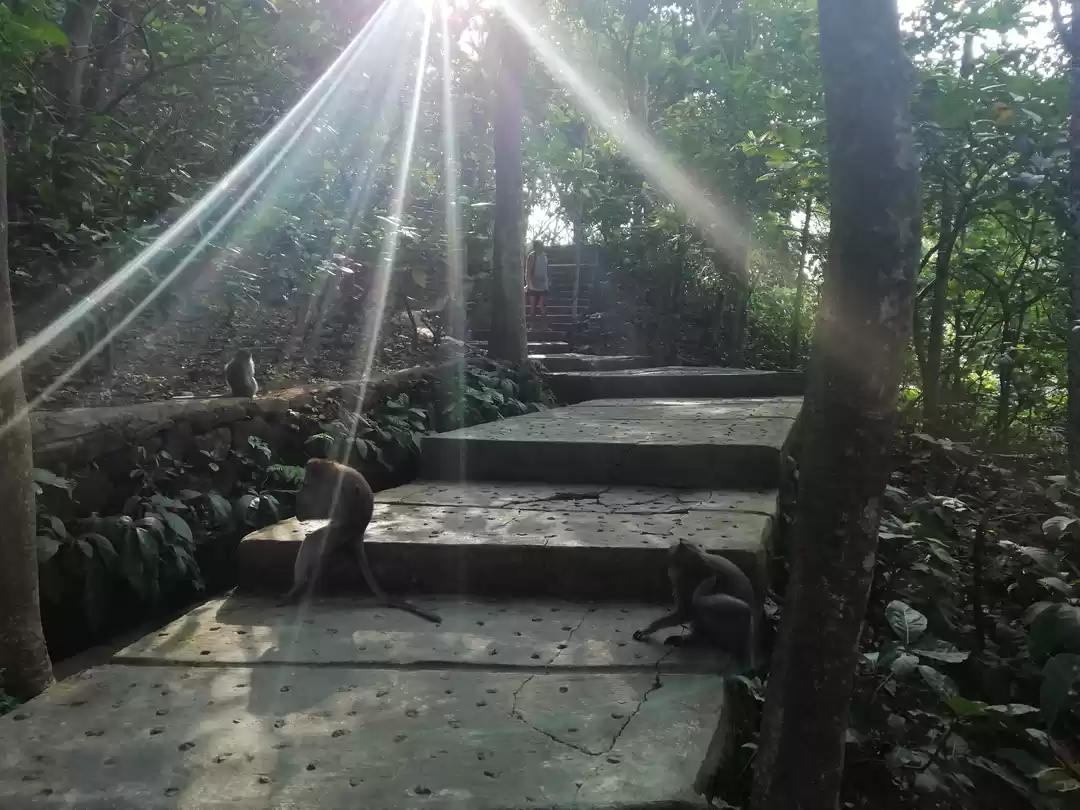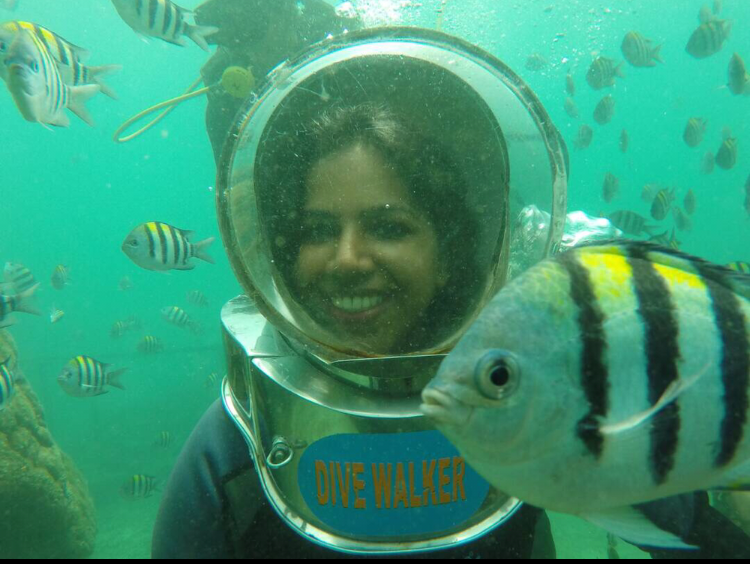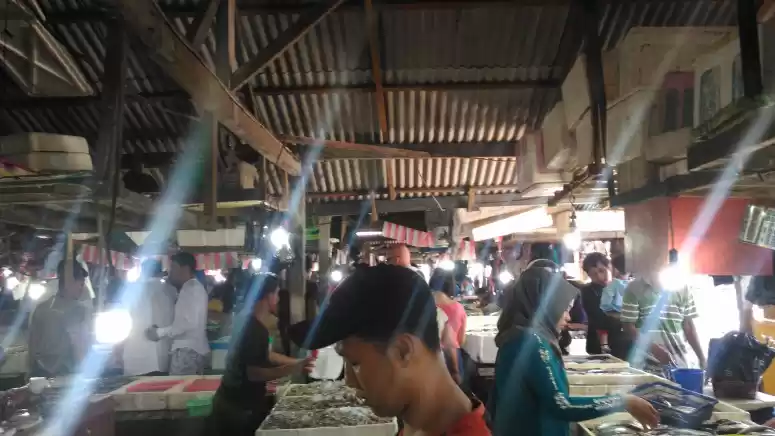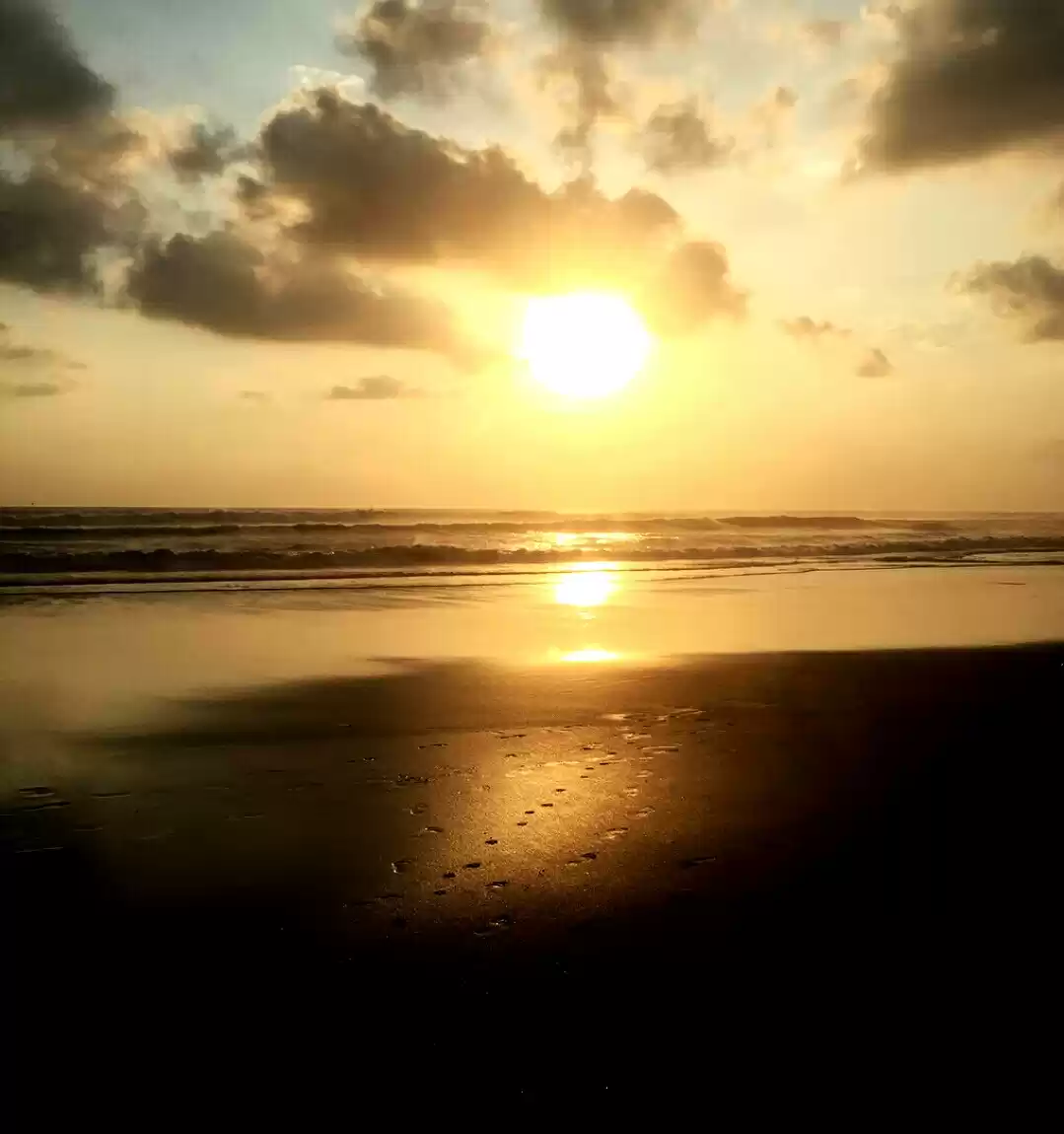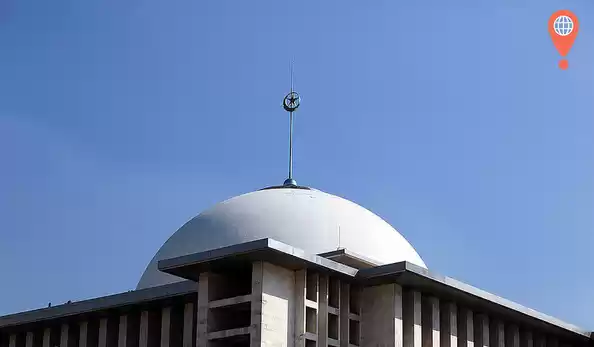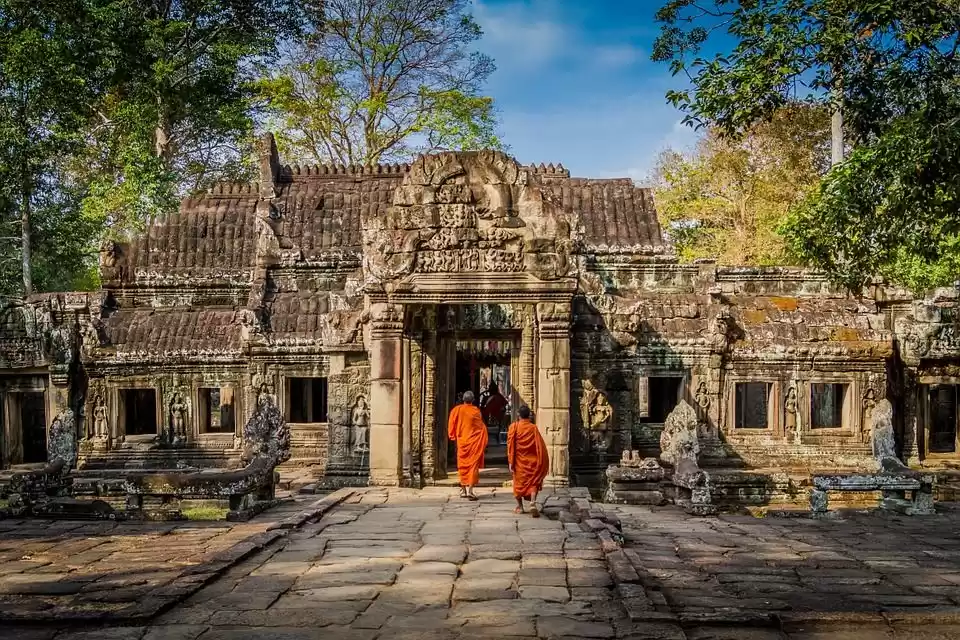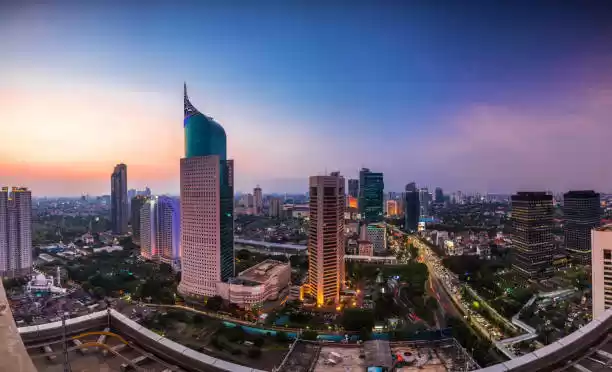Taman Mini Indonesia Indah (TMII) or Beautiful Indonesia Miniature Park is a cultural theme park in Jakarta that showcases the diversity of Indonesia's provinces, cultures, and religions. The park covers an area of 150 hectares and features various attractions and facilities, such as the regional pavilions, the houses of worship, the museums, the bird park, the waterpark, the cinemas, and the theaters. Whether you are interested in learning about Indonesia's history and culture, enjoying the natural beauty and wildlife, or having fun and entertainment for the whole family, TMII has something for everyone. In this article, we will help you learn more about the park and its attractions, and plan your visit with some practical information and tips.

Regional Pavilions: Explore the Traditional Houses and Cultures of Every Province in Indonesia
The regional pavilions are the main attraction of TMII, as they represent the 34 provinces of Indonesia and their cultures. Each pavilion features a traditional house that reflects the architecture, history, arts and crafts, and traditions of the province. You can enter the houses and see the interior decorations, the furniture, the utensils, and the costumes. You can also watch cultural performances, such as dances, music, and puppet shows, that are held regularly at the pavilions. Some of the most popular and unique pavilions are:
Bali Pavilion: The Bali Pavilion showcases the rich and vibrant culture of the island of Bali, known for its Hindu religion, its temples, and its arts. The pavilion features a Balinese-style house with a thatched roof, a courtyard, and a shrine. You can see the intricate carvings, paintings, and sculptures that adorn the house, as well as the traditional clothing and accessories. You can also watch the famous Balinese dances, such as the Barong, the Legong, and the Kecak, that are performed by skilled dancers and musicians.
Papua Pavilion: The Papua Pavilion showcases the diverse and exotic culture of the island of Papua, known for its indigenous tribes, its wildlife, and its natural resources. The pavilion features a Papuan-style house with a conical roof, a wooden structure, and a bamboo fence. You can see the colorful ornaments, masks, and weapons that are used by the tribes, as well as the traditional clothing and jewelry. You can also watch the spectacular Papuan dances, such as the Yospan, the Yosim, and the Sajojo, that are performed by energetic dancers and singers.
Aceh Pavilion: The Aceh Pavilion showcases the Islamic and maritime culture of the province of Aceh, known for its history, its mosques, and its coffee. The pavilion features an Acehnese-style house with a pointed roof, a brick wall, and a wooden porch. You can see the elegant calligraphy, ceramics, and carpets that decorate the house, as well as the traditional clothing and instruments. You can also watch the graceful Acehnese dances, such as the Saman, the Ratoh Jaroe, and the Seudati, that are performed by synchronized dancers and chanters.
Yogyakarta Pavilion: The Yogyakarta Pavilion showcases the royal and artistic culture of the province of Yogyakarta, known for its sultanate, its temples, and its batik. The pavilion features a Javanese-style house with a pyramidal roof, a wooden frame, and a tiled floor. You can see the exquisite paintings, sculptures, and puppets that adorn the house, as well as the traditional clothing and batik. You can also watch the classical Javanese dances, such as the Bedhaya, the Srimpi, and the Serimpi, that are performed by elegant dancers and gamelan players.
Some tips and recommendations for visiting the regional pavilions are:
- The best time to visit the pavilions is in the morning or afternoon, when the weather is cooler and the crowds are smaller.
- The dress code for entering the pavilions is modest and respectful, especially for the houses of worship. You may need to cover your head, shoulders, and legs, and remove your shoes before entering.
- The etiquette for visiting the pavilions is polite and courteous, especially for the cultural performances. You should not touch, photograph, or interrupt the performers, and you should clap and appreciate their efforts.
- The budget for visiting the pavilions is affordable and reasonable, as the admission fee is only 10,000 IDR (0.7 USD) per person, and the souvenirs are cheap and negotiable.
Houses of Worship: Discover the Six Major Religions and Their Beliefs in Indonesia
The houses of worship are another attraction of TMII, as they represent the six major religions and their beliefs in Indonesia. Each house of worship features a building that reflects the architecture, history, and symbolism of the religion, such as Islam, Christianity, Catholicism, Hinduism, Buddhism, and Confucianism. You can enter the buildings and see the interior designs, the furniture, the scriptures, and the icons. You can also join the religious services, such as prayers, ceremonies, and festivals, that are held regularly at the houses of worship. The significance and symbolism of the houses of worship are:
Mosque: The mosque represents Islam, the largest and official religion in Indonesia, with about 87% of the population. The mosque features a dome, a minaret, and a mihrab, which symbolize the unity, the guidance, and the direction of Allah. You can see the Arabic inscriptions, the carpets, and the Quran that decorate the mosque, as well as the prayer mats and the ablution facilities. You can also join the five daily prayers, the Friday sermon, and the Eid al-Fitr and Eid al-Adha celebrations that are held at the mosque.
Church: The church represents Christianity, the second largest religion in Indonesia, with about 10% of the population. The church features a cross, a bell tower, and a nave, which symbolize the sacrifice, the announcement, and the congregation of Jesus Christ. You can see the stained glass windows, the paintings, and the Bible that decorate the church, as well as the pews and the altar. You can also join the Sunday service, the Christmas and Easter celebrations, and the baptism and communion ceremonies that are held at the church.
Cathedral: The cathedral represents Catholicism, a branch of Christianity that is followed by about 3% of the population. The cathedral features a spire, a rose window, and a transept, which symbolize the aspiration, the illumination, and the cross of Jesus Christ. You can see the statues, the sculptures, and the rosary that decorate the cathedral, as well as the confessionals and the organ. You can also join the Sunday mass, the Christmas and Easter celebrations, and the baptism and confirmation ceremonies that are held at the cathedral.
Temple: The temple represents Hinduism, the oldest and the fourth largest religion in Indonesia, with about 1.7% of the population. The temple features a tower, a gate, and a shrine, which symbolize the cosmos, the transition, and the devotion of the gods. You can see the carvings, the offerings, and the Vedas that decorate the temple, as well as the incense and the flowers. You can also join the daily puja, the Nyepi and Galungan celebrations, and the cremation and reincarnation ceremonies that are held at the temple.
Pagoda: The pagoda represents Buddhism, the fifth largest religion in Indonesia, with about 0.7% of the population. The pagoda features a stupa, a lotus, and a bodhi tree, which symbolize the enlightenment, the purity, and the wisdom of the Buddha. You can see the relics, the statues, and the sutras that decorate the pagoda, as well as the candles and the flags. You can also join the meditation, the Vesak and Asalha Puja celebrations, and the ordination and alms giving ceremonies that are held at the pagoda.
Klenteng: The klenteng represents Confucianism, the sixth largest religion in Indonesia, with about 0.05% of the population. The klenteng features a roof, a door, and a hall, which symbolize the heaven, the earth, and the human of the Tao. You can see the inscriptions, the lanterns, and the Analects that decorate the klenteng, as well as the tablets and the drums. You can also join the worship, the Chinese New Year and Qingming Festival celebrations, and the ancestor and filial piety ceremonies that are held at the klenteng.
Some information and guidance for visiting the houses of worship are:
- The opening hours for the houses of worship are from 8 a.m. to 4 p.m., except for the mosque, which is open from 5 a.m. to 9 p.m.
- The admission fees for the houses of worship are free, except for the temple, which charges 10,000 IDR (0.7 USD) per person, and the pagoda, which charges 5,000 IDR (0.35 USD) per person.
- The rules for visiting the houses of worship are respectful and considerate, especially for the religious services. You should not disturb, interrupt, or join the services without permission, and you should follow the instructions and directions of the staff and the worshippers.
- The events for visiting the houses of worship are varied and festive, especially for the religious celebrations. You can witness and participate in the celebrations, such as the prayers, the processions, and the rituals, and you can enjoy the atmosphere, the food, and the entertainment.
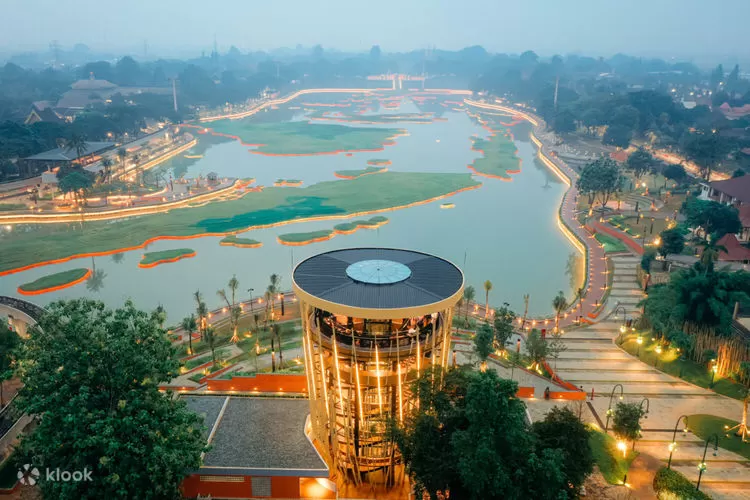
Museums: Learn About the Various Themes and Collections of Indonesia's History and Culture
The museums are another attraction of TMII, as they represent the various themes and collections of Indonesia's history and culture. Each museum features a building that reflects the design, style, and function of the theme, such as the rare animals, the Asmat, the sports, and the gifts. You can enter the buildings and see the exhibits, the displays, and the artifacts. You can also interact with the features, such as the games, the simulations, and the experiments, that are available at some of the museums. Some of the most interesting and educational museums are:
Museum of Indonesia: The Museum of Indonesia is the largest and the most comprehensive museum in TMII, as it covers the history, the geography, the sociology, and the anthropology of Indonesia. The museum features a modern building with a dome, a hall, and a gallery, which symbolize the unity, the diversity, and the creativity of Indonesia. You can see the collections, such as the ceramics, the textiles, and the sculptures, that represent the different regions, ethnic groups, and periods of Indonesia. You can also interact with the features, such as the dioramas, the maps, and the models, that illustrate the various aspects, such as the flora, the fauna, and the economy, of Indonesia.
Museum of Transportation: The Museum of Transportation is the most popular and the most interactive museum in TMII, as it covers the development, the innovation, and the impact of transportation in Indonesia. The museum features a futuristic building with a circular shape, a glass wall, and a steel frame, which symbolize the movement, the transparency, and the technology of transportation. You can see the collections, such as the cars, the trains, and the planes, that represent the different modes, types, and eras of transportation in Indonesia. You can also interact with the features, such as the games, the simulations, and the experiments, that demonstrate the principles, the functions, and the effects of transportation in Indonesia.
Museum of Electricity and Energy: The Museum of Electricity and Energy is the most informative and the most enlightening museum in TMII, as it covers the sources, the uses, and the challenges of electricity and energy in Indonesia. The museum features a contemporary building with a triangular shape, a solar panel, and a wind turbine, which symbolize the efficiency, the sustainability, and the renewable of electricity and energy. You can see the collections, such as the generators, the transformers, and the meters, that represent the different forms, stages, and measurements of electricity and energy in Indonesia. You can also interact with the features, such as the games, the simulations, and the experiments, that explain the concepts, the applications, and the issues of electricity and energy in Indonesia.
Museum of Stamps: The Museum of Stamps is the most unique and the most colorful museum in TMII, as it covers the history, the design, and the value of stamps in Indonesia. The museum features a traditional building with a gable roof, a wooden wall, and a tiled floor, which symbolize the heritage, the culture, and the art of stamps. You can see the collections, such as the stamps, the envelopes, and the postcards, that represent the different themes, styles, and periods of stamps in Indonesia. You can also interact with the features, such as the games, the simulations, and the experiments, that show the production, the distribution, and the collection of stamps in Indonesia.
Some advice and suggestions for visiting the museums are:
- The best order to visit the museums is according to your interest and preference, as there are 18 museums to choose from, and each museum has its own charm and appeal.
- The duration to visit the museums is depending on your time and curiosity, as each museum has a lot to offer, and you may want to spend more time at some museums than others.
- The interactive features to visit the museums are depending on your age and ability, as some features are more suitable and enjoyable for children, adults, or seniors, and some features may require physical or mental skills.
- The souvenirs to visit the museums are depending on your budget and taste, as each museum has a souvenir shop that sells various items, such as books, magnets, and models, and some items may be more expensive or attractive than others.
Bird Park: Enjoy the Exotic Birds from All Over Indonesia Inside Giant Domes
The bird park is another attraction of TMII, as it showcases the exotic birds from all over Indonesia inside giant domes that mimic their natural habitats. The bird park covers an area of 17 hectares and features various facilities and amenities, such as the domes, the cages, the ponds, and the bridges. You can enter the domes and see the birds, the plants, and the rocks. You can also feed, touch, and photograph the birds, as well as watch the shows and the demonstrations that are held at the bird park. Some of the most beautiful and rare birds that can be seen in the bird park are:
Bali Starling: The Bali starling is the most endangered and the most protected bird in Indonesia, as it is endemic to the island of Bali and has a population of less than 100 in the wild. The bird park has a special dome for the Bali starling, where you can see the white and black plumage, the blue mask, and the yellow crest that make the bird so distinctive and attractive. You can also hear the loud and melodious song that the bird sings to communicate and attract mates.
Hornbill: The hornbill is the most iconic and the most symbolic bird in Indonesia, as it is widely distributed across the archipelago and has a cultural and religious significance for many ethnic groups. The bird park has a large dome for the hornbill, where you can see the different species, sizes, and colors of the bird, such as the rhinoceros hornbill, the helmeted hornbill, and the wreathed hornbill. You can also see the impressive and peculiar horn, or casque, that the bird uses for defense, display, and sound production.
Peacock: The peacock is the most elegant and the most spectacular bird in Indonesia, as it is native to the island of Java and has a stunning and splendid appearance. The bird park has a spacious dome for the peacock, where you can see the male and female peacocks, or peafowls, and their different varieties, such as the green peafowl, the blue peafowl, and the white peafowl. You can also see the magnificent and marvelous tail, or train, that the male peacock uses for courtship, mating, and intimidation.
Parrot: The parrot is the most intelligent and the most entertaining bird in Indonesia, as it is found in many islands and has a remarkable and amusing ability. The bird park has a colorful dome for the parrot, where you can see the different genera, families, and orders of the bird, such as the cockatoo, the lorikeet, and the macaw. You can also see the amazing and amusing tricks, such as talking, singing, and dancing, that the parrot can perform and learn.
Some fun and useful facts and tips for visiting the bird park are:
- The feeding times for the bird park are at 10 a.m. and 2 p.m., when you can buy some seeds, fruits, or nuts and feed the birds by hand or by spoon. You can also see the staff feeding the birds with special diets and supplements.
- The shows for the bird park are at 11 a.m. and 3 p.m., when you can watch the birds performing various skills and behaviors, such as flying, catching, and solving. You can also participate in the shows by volunteering or cheering.
- The photography for the bird park is allowed and encouraged, as you can capture the beauty and diversity of the birds and their habitats. You can also pose with the birds and take selfies or portraits.
- The conservation for the bird park is important and appreciated, as you can support the efforts and initiatives of the park to protect and preserve the birds and their environments. You can also donate or adopt the birds and become their sponsors or guardians.
Waterpark, Cinemas, and Theaters: Have Fun and Entertainment for the Whole Family
The waterpark, cinemas, and theaters are another attraction of TMII, as they offer fun and entertainment for the whole family. The waterpark, cinemas, and theaters cover an area of 35 hectares and feature various attractions and facilities, such as the slides, the pools, the movies, the shows, and the snacks. You can enter the attractions and enjoy the thrill, the excitement, and the amusement. You can also relax, socialize, and have a good time with your family and friends at the waterpark, cinemas, and theaters. Some of the most fun and entertaining attractions are:
Snowbay Waterpark: The Snowbay Waterpark is the most adventurous and the most refreshing attraction in TMII, as it is a snow-themed waterpark that has various slides, pools, and rides. You can enjoy the different slides, such as the Flush Bowl, the Typhoon Coaster, and the Hurricane, that will make you scream and splash. You can also enjoy the different pools, such as the Wave Pool, the Lazy River, and the Hot Pool, that will make you relax and unwind. You can also enjoy the different rides, such as the Snow Tube, the Snow Play, and the Snow Spray, that will make you feel and touch the snow.
Among Putro Skyworld: The Among Putro Skyworld is the most thrilling and the most exhilarating attraction in TMII, as it is a sky-themed amusement park that has various rides, games, and attractions. You can enjoy the different rides, such as the Sky Lift, the Sky Bike, and the Sky Balloon, that will make you fly and soar. You can also enjoy the different games, such as the Sky Shooter, the Sky Darts, and the Sky Bowling, that will make you aim and score. You can also enjoy the different attractions, such as the Sky Theater, the Sky Museum, and the Sky Garden, that will make you learn and appreciate the sky.
Keong Emas IMAX Theater: The Keong Emas IMAX Theater is the most immersive and the most impressive attraction in TMII, as it is a giant-screen cinema that has various movies, shows, and documentaries. You can enjoy the different movies, such as the action, the comedy, and the animation, that will make you laugh and cry. You can also enjoy the different shows, such as the musical, the drama, and the opera, that will make you clap and cheer. You can also enjoy the different documentaries, such as the nature, the history, and the culture, that will make you wonder and discover.
4D Motion Cinema: The 4D Motion Cinema is the most innovative and the most realistic attraction in TMII, as it is a four-dimensional cinema that has various effects, sensations, and experiences. You can enjoy the different effects, such as the wind, the water, and the smoke, that will make you feel and sense the movie. You can also enjoy the different sensations, such as the vibration, the movement, and the tilt, that will make you shake and sway with the movie. You can also enjoy the different experiences, such as the adventure, the horror, and the fantasy, that will make you live and breathe the movie.
Some recommendations and precautions for visiting the waterpark, cinemas, and theaters are:
- The tickets for the waterpark, cinemas, and theaters are separate and additional from the entrance fee to TMII, and they vary depending on the attraction, the time, and the day. You can buy the tickets online or at the ticket booths, and you can check the prices and schedules on the official website or the information boards.
- The schedules for the waterpark, cinemas, and theaters are subject to change and availability, and they may be affected by the weather, the maintenance, and the demand. You can check the schedules online or at the information boards, and you can plan your visit accordingly.
- The safety for the waterpark, cinemas, and theaters is paramount and mandatory, and you must follow the rules and regulations of each attraction. You must wear the appropriate attire and equipment, such as the swimsuit, the goggles, and the life jacket, for the waterpark. You must wear the appropriate accessories, such as the glasses, the headphones, and the seat belt, for the cinemas and theaters. You must also follow the instructions and directions of the staff and the signs, and you must not bring any prohibited items, such as food, drinks, or cameras, to the attractions.
Conclusion
Taman Mini Indonesia Indah is a cultural theme park that celebrates Indonesia's diversity, and it has many attractions and features to offer to the visitors, such as the regional pavilions, the houses of worship, the museums, the bird park, the waterpark, the cinemas, and the theaters. Whether you are interested in learning about Indonesia's history and culture, enjoying the natural beauty and wildlife, or having fun and entertainment for the whole family, TMII has something for everyone. In this article, we have helped you learn more about the park and its attractions, and plan your visit with some practical information and tips.
If you want to know more about TMII, you can visit the official website, the social media, the reviews, and the related places. Thank you for reading this article, and we hope you have a wonderful time at TMII. 😊


